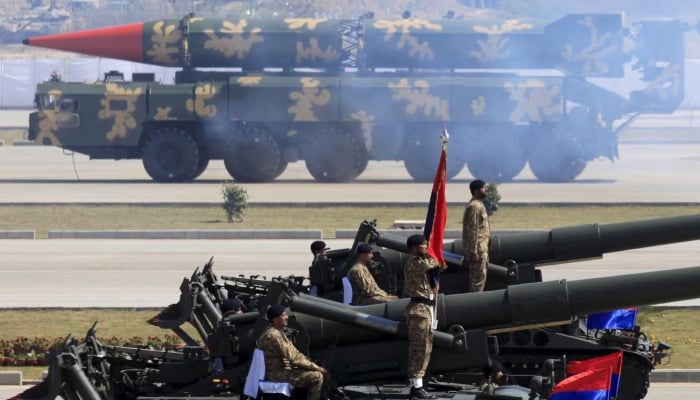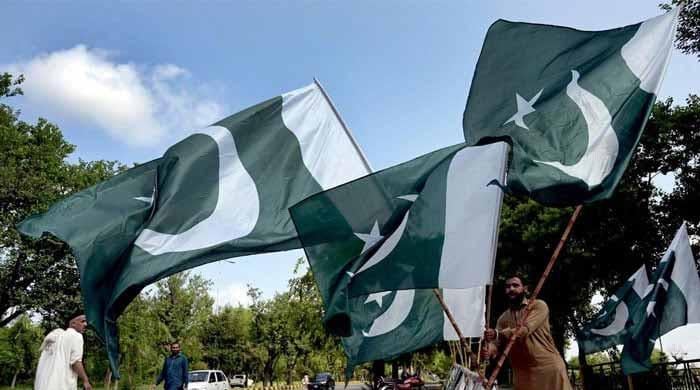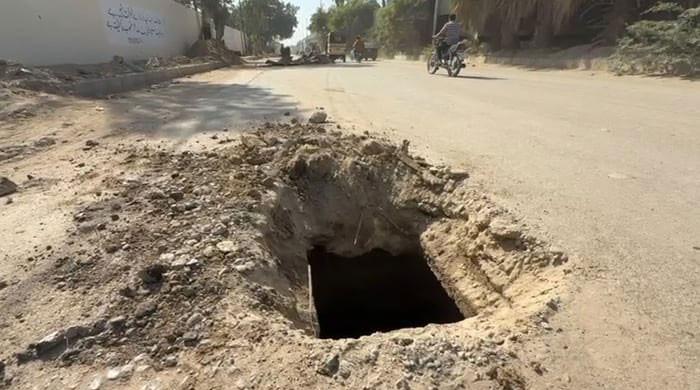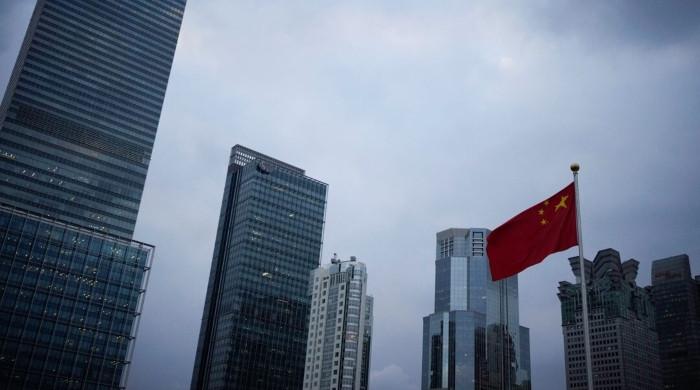The dimensions of modern war
In case of current conflict, situation has been made even worse by hype and hysteria pouring across border
May 13, 2025

There have been deaths in the airstrikes made by India and Pakistan over each other. The exact figures are difficult to ascertain. It is also difficult to say precisely where people were killed and how many aircraft were brought down. Truth is always one of the first victims in any situation of war or extreme tension between two nations.
This tragedy has gained attention but the continuing deaths of Kashmiris over the decades in the firing across the Line of Control on both sides have remained largely ignored.
In the case of the current conflict, the situation has been made even worse by the hype and hysteria pouring across the border. Much of the worst aspects of this come from India. There have, of course, been replies from Pakistan, but to some degree, this is inevitable.
However, some of the memes, the TikTok images, the cartoons and the other uses to which the social media has been put, do not suggest there is any realisation of what war really means to the families who lose children or other members and to the soldiers who must perform their duties as per orders.
There are also other kinds of losses in this war. One is the fact that the exchange of reactions over social media, the blatantly fake news and the AI images put out most prominently by India and the other kinds of cliched remarks do nothing to build trust between people who share a long history in common. We have lost so much in losing this trust. In one way or the other, it has to be restored.
It is unfortunate that the loss of this trust, mainly as a result of the policies followed by the extremist Modi-led BJP government, have constantly depicted Pakistan and indeed all Muslims, including the millions who live in India, as enemies. There is at the moment nothing resembling bilateral relations between the two countries. It is true that talks at a lower level do take place in sorting out matters, including trade, which exists at various levels.
But this is not enough. We need a full-scale dialogue at all times to sort out the difficulties the two nations face. It is a good sign that the hotline has already been opened between the two nuclear-armed states. Pakistan and India both spend huge amounts on their military arsenals.
According to a leading defence and armaments think tank, India and Pakistan both spend billions on their defence. They may not be huge amounts compared to some other countries, far below the enormous expenditures of the US and Russia, but are still a lot.
And the truth is that any kind of nuclear calamity between the two nations, triggered perhaps by a misunderstanding or the accidental launch of a missile, would trigger a catastrophe which would not only destroy the two nations themselves, but also a large part of the rest of the globe.
These talks can prevent such a calamity from unfolding, even as we engage in social media imagery and the exchange of various kinds of insults and abuses over the various platforms available to both countries, including Twitter or X, which has recently been unblocked in Pakistan, allowing Pakistanis a chance to hit back at the Indian diatribe that we see on this and other forums.
It is heartening to note that the nations currently trying to ensure some kind of calm is returned to the region seem to be successful in their task for now. But this is a longer-term problem. Pakistan and India need to evolve some degree of ability to talk to each other and negotiate matters, as do other nations which are neighbours. We have already seen what damage hatred can bring in the many wars fought out in modern times.
The conflict in the Middle East is an example from the most recent age. There are many others across the globe and on all its continents. The lessons from these need to be learned and taught to people, especially younger people, who have learned very little at their schools and other institutions, and who post the most irresponsible content, sometimes aimed at getting laughs on TikTok and other media. There is nothing remotely comical about war.
Aside from these matters, there is also the issue of the Kashmiris themselves. At the present time, those close to the LOC live in constant fear, with reports from Azad Jammu and Kashmir (AJK) stating that families are sleeping out in the open to avoid firing from the Indian side. There's no doubt that this is also true on the other side.
The situation of the Kashmiris has been an extremely difficult one since 1947. The situation has worsened since Kashmir was effectively annexed by the Modi government and attempts made to turn it into a part of India.
The endless struggles of the Kashmiri people and the hardships they have faced should not be forgotten in the current exchange of rhetoric and diatribe aimed at each other's countries. These people, after all, are the worst sufferers of this and the previous conflicts that have taken place over Kashmir.
Some method needs to be found to put the genie back in the bottle. How this will happen is not clear at the present time. We know that the US is in the picture, at the level that is possible under a setup led by President Donald Trump, and is making some efforts to restore normalcy. So are other nations and individuals in both countries, including peace activists and other persons with prominence in their communities.
This is especially hard to achieve in India and increasingly, also in Pakistan. But we hope that their efforts will bring the current tensions to an end and a return made to the situation that existed before the fighter jets flew over Pakistan. From this point on, there should then be an effort to restart dialogue at some level and end the threats that have already been made.
The writer is a freelance columnist and former newspaper editor. She can be reached at: [email protected]
Disclaimer: The viewpoints expressed in this piece are the writer's own and don't necessarily reflect Geo.tv's editorial policy.
Originally published in The News









